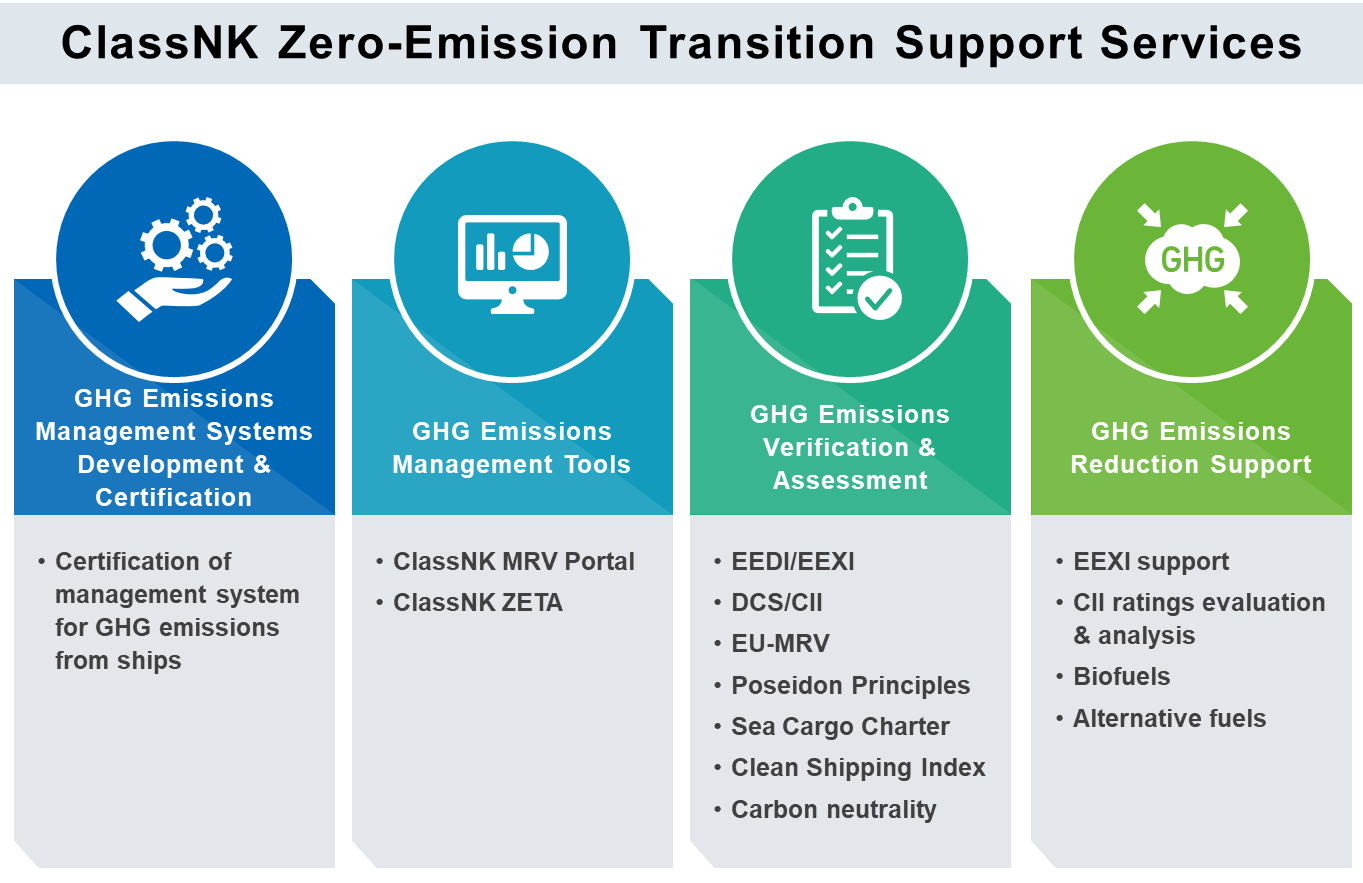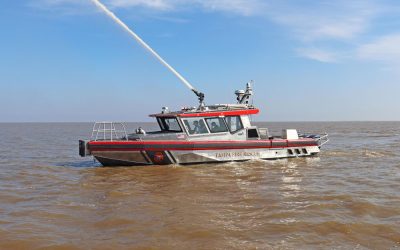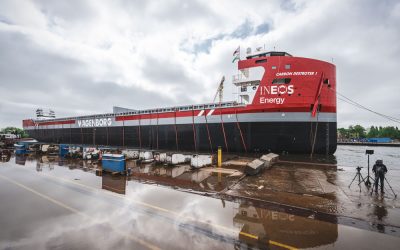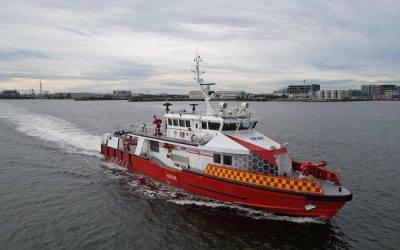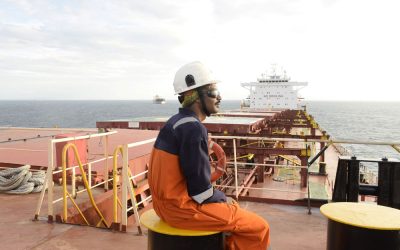In light of the acceleration in initiatives toward zero-emission shipping, Japanese classification society ClassNK has been stepping up its services to help customers involved in the maritime transportation business manage their reduction in greenhouse gases (GHG). Restructures in the organisation have seen the establishment of a Zero-Emission Transition Center and Marine GHG Certification Department, and the society’s extended Zero-Emission Transition Support Services now address an array of customer needs.
“A number of leading companies in the shipping business, particularly in Japan, have committed to reach net-zero emissions by 2050. To do this, it’s important that they establish an emissions reduction plan. We expect strong demand from companies wishing to introduce management services for GHG emissions,” Mr Katsuya Naito, general manager, Zero-Emission Transition Center, Planning Division, tells The Naval Architect.
According to Mr Naito, the centre’s extended services build on services already introduced by the society to help with emissions reporting requirements for the International Maritime Organization Data Collection System for fuel oil consumption (IMO DCS) and EU-MRV (monitoring, reporting and verification) schemes, and now provide customers with a comprehensive menu that includes: GHG emissions management system development and certification; GHG emissions management tools; GHG emissions verification and assessment; and GHG emissions reduction support.
Advanced emissions tracking
He adds that with an eye on the new Carbon Intensity Indicator (CII) energy efficiency regulation coming into force next year, the society recently enhanced its offering with the addition of the ClassNK ZETA (Zero-Emission Transition Accelerator), a GHG emissions management tool to track accurate CO2 emissions and confirm and simulate CII ratings.
“You can check the CO2 emissions – for example, total amount, annual efficiency ratio and Energy Efficiency Operational Index – and CII rating results of an individual ship or fleet at any time,” he explains. “It also lets you simulate how CO2 emissions and CII rating results would change when slow steaming and other operations are implemented.”
ZETA, which is a cloud-based service that can be used on an internet browser without the need to install any other software, links with data sent to ClassNK’s MRV Portal. Launched in 2017 and subject to continuous development and improvement, the MRV Portal supports compliance with schemes such as the IMO DCS and EU-MRV regulations.
“Support with creating emission reports in compliance with IMO DCS and EU-MRV is provided by gathering and monitoring data and documentation sent by ship management companies from onboard a ship or onshore to ClassNK’s server,” explains Mr Naito.
The new ZETA tool has four main features: Vessel Monitoring; Fleet Monitoring; Simulation; and Periodical Report.
“The Vessel Monitoring feature allows you to check CO2 emissions and CII ratings on a real-time basis for each individual vessel. Users can also check the estimated annual CO2 emissions and CII ratings based on the current operation status at any time and consider any necessary measures,” Mr Naito says.
He adds that the Fleet Monitoring feature displays CO2 emissions and CII ratings of the entire fleet for each company or team in charge. “It makes it possible to check the CO2 emissions of the fleet and the progress of the company’s overall CO2 reduction targets at any time,” he says.
Simulation allows users to simulate the changes in CO2 emissions and CII ratings for an individual ship or fleet that would be seen by slow steaming, installing energy-saving devices, or switching fuels. Various simulations enable users to consider measures for reducing CO2 emissions.
The Periodical Report feature outputs CO2 emissions by voyage, cargo, ship and fleet. The report is output in A4 size and PDF format. “In the future, it will also allow you to meet the reporting needs of various stakeholders, such as financial institutions, cargo owners and insurance companies,” says Mr Naito.
ClassNK is currently developing ZETA features that can be used for frameworks such as the Poseidon Principles and the Sea Cargo Charter and plans to implement them during 2022.
In addition to ship management companies and other data holders, ClassNK ZETA is also available to shipowners and charterers, subject to data usage permission by the data holders. Worldwide, approximately 80 companies have already signed up for ZETA with more in the pipeline, Mr Naito concludes.
